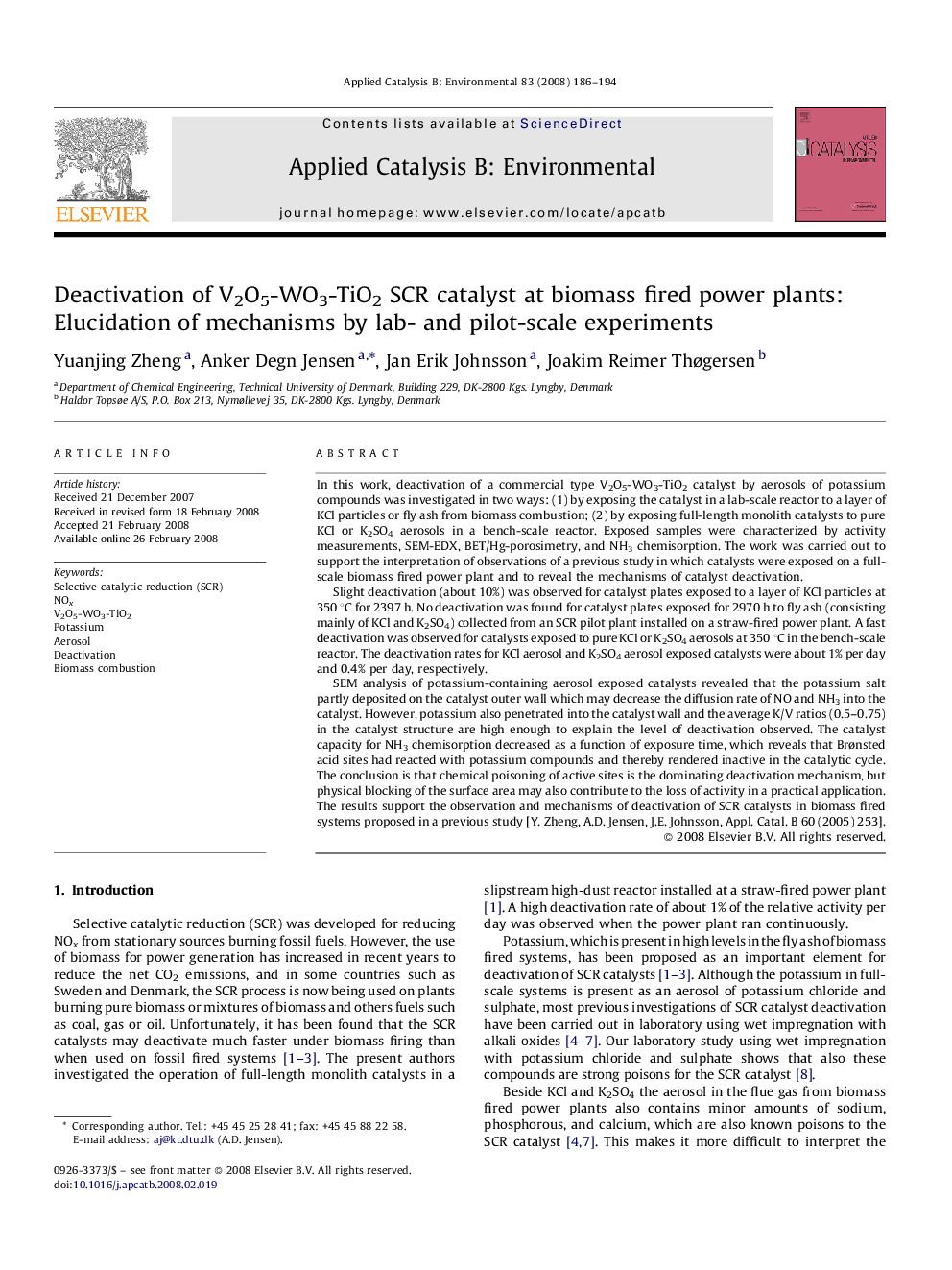| کد مقاله | کد نشریه | سال انتشار | مقاله انگلیسی | نسخه تمام متن |
|---|---|---|---|---|
| 48150 | 46495 | 2008 | 9 صفحه PDF | دانلود رایگان |

In this work, deactivation of a commercial type V2O5-WO3-TiO2 catalyst by aerosols of potassium compounds was investigated in two ways: (1) by exposing the catalyst in a lab-scale reactor to a layer of KCl particles or fly ash from biomass combustion; (2) by exposing full-length monolith catalysts to pure KCl or K2SO4 aerosols in a bench-scale reactor. Exposed samples were characterized by activity measurements, SEM-EDX, BET/Hg-porosimetry, and NH3 chemisorption. The work was carried out to support the interpretation of observations of a previous study in which catalysts were exposed on a full-scale biomass fired power plant and to reveal the mechanisms of catalyst deactivation.Slight deactivation (about 10%) was observed for catalyst plates exposed to a layer of KCl particles at 350 °C for 2397 h. No deactivation was found for catalyst plates exposed for 2970 h to fly ash (consisting mainly of KCl and K2SO4) collected from an SCR pilot plant installed on a straw-fired power plant. A fast deactivation was observed for catalysts exposed to pure KCl or K2SO4 aerosols at 350 °C in the bench-scale reactor. The deactivation rates for KCl aerosol and K2SO4 aerosol exposed catalysts were about 1% per day and 0.4% per day, respectively.SEM analysis of potassium-containing aerosol exposed catalysts revealed that the potassium salt partly deposited on the catalyst outer wall which may decrease the diffusion rate of NO and NH3 into the catalyst. However, potassium also penetrated into the catalyst wall and the average K/V ratios (0.5–0.75) in the catalyst structure are high enough to explain the level of deactivation observed. The catalyst capacity for NH3 chemisorption decreased as a function of exposure time, which reveals that Brønsted acid sites had reacted with potassium compounds and thereby rendered inactive in the catalytic cycle. The conclusion is that chemical poisoning of active sites is the dominating deactivation mechanism, but physical blocking of the surface area may also contribute to the loss of activity in a practical application. The results support the observation and mechanisms of deactivation of SCR catalysts in biomass fired systems proposed in a previous study [Y. Zheng, A.D. Jensen, J.E. Johnsson, Appl. Catal. B 60 (2005) 253].
Journal: Applied Catalysis B: Environmental - Volume 83, Issues 3–4, 23 September 2008, Pages 186–194